Wi-Fi does has some advantages over ethernet. There’s no wire clutter, and you can connect anywhere in your home. Almost all modern devices can connect to Wi-Fi from desktops to smartphones. And you can have many devices connected and streaming simultaneously. But on balance, I prefer ethernet over Wi-Fi, as it offers more reliable and consistent connections with faster connection speeds.
Upgrading to a 2.5 Gbps ethernet network offers faster speeds, improved responsiveness, and future-proofs your network, especially for devices using WiFi 6 and beyond. It’s a sensible upgrade for users who need more bandwidth for tasks like 4K streaming, online gaming, and faster file transfers to NAS devices.
Even if your internet router only supports gigabyte ethernet, it still makes sense to run your local network over 2.5 Gbps ethernet. Nowadays more and more devices come with a 2.5 Gbps network port or sometimes even multiple ports. For example, both my NAS systems support 2.5 Gbps ethernet, as does the Intel NUC 13 Pro, my desktop PCs, and even some single board computers (such as the Orange Pi 5 Max and Orange Pi 5 Turbo). And machines which only have a gigabyte ethernet port, there’s always the option of adding a PCIe card or a USB dongle to give the higher transfer speeds.
So if your router only offers 1 Gbps ports, how do you get 2.5 Gbps ethernet for your local network? The simple solution is to use a 2.5 Gbps switch. Connect the switch to your router and to your local devices. This review looks at the BrosTrend 5 Port 2.5 Gbps switch.
Design
Here are images of the front and side view of the switch.
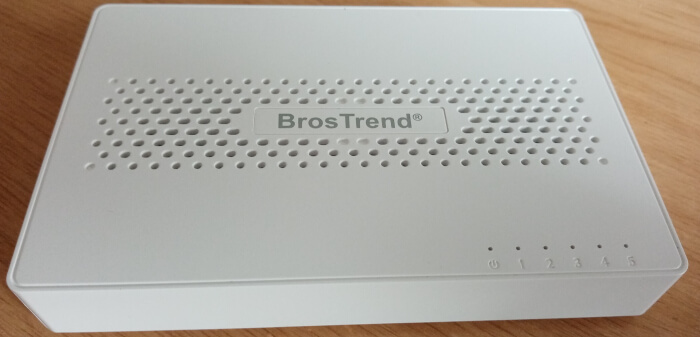
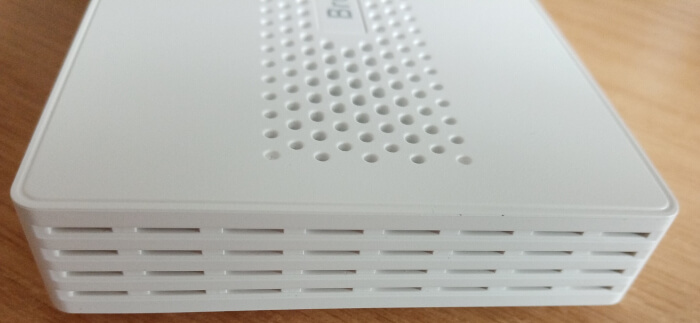
You’ll notice the switch has lots of ventilation holes particularly on the sides and bottom. The switch is a fanless design, so these vents help keep the device cool.
Installation
There really isn’t any installation. It’s literally just plug and play. Just plug in the supplied power adapter to the switch, and connect Cat 5e/6 cables from the switch to your devices. As I want these local devices to have wired internet access, I’ll use one of the 5 ports to connect the switch to my router. I chose port 1 but it can be any of the ports.
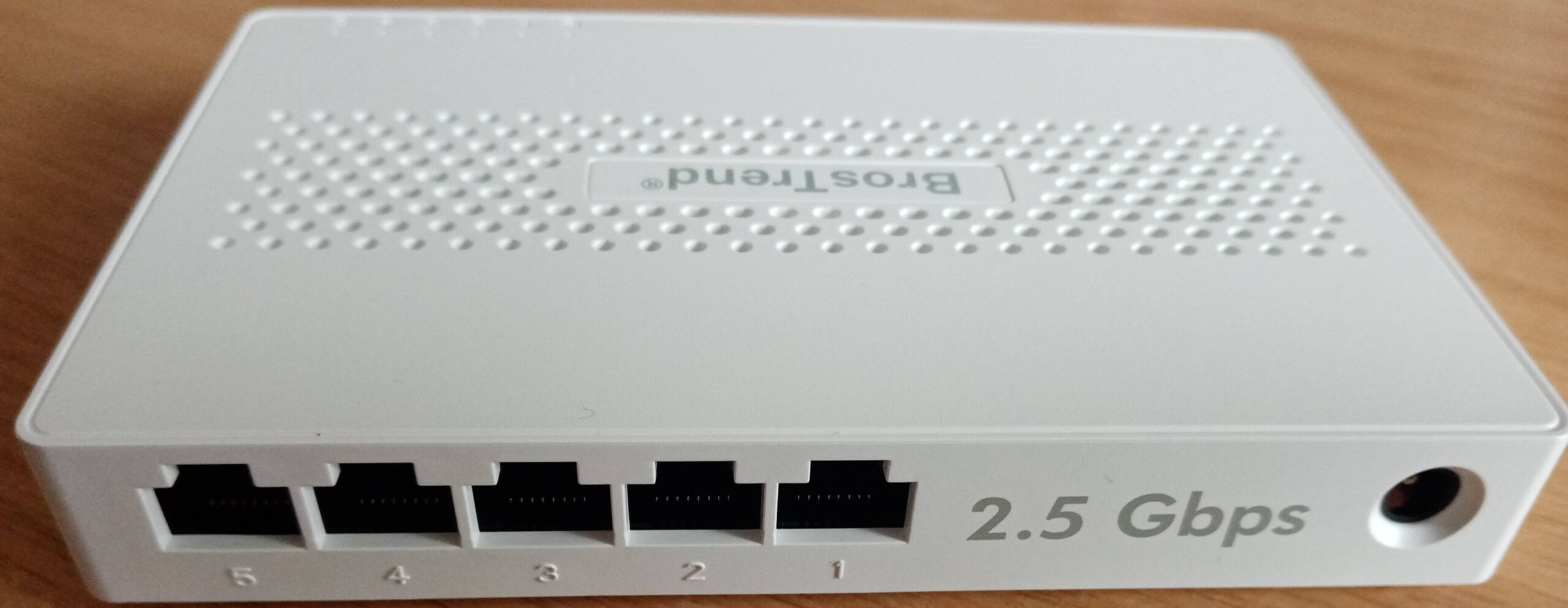
One of the advantages of 2.5GB is that you don’t need to buy new ethernet cable. Any Cat 5e or Cat 6 cable will be fine.
In Operation
In the example below, I’m using iperf to check the connection speed between an Orange Pi 5 Max and an Intel NUC 13 Pro, both running Linux (of course). iperf is a tool for active measurements of the maximum achievable bandwidth on IP networks.
Both these machines have 2.5GB ethernet ports and are connected to the BrosTrend switch. Here’s the output from iperf.
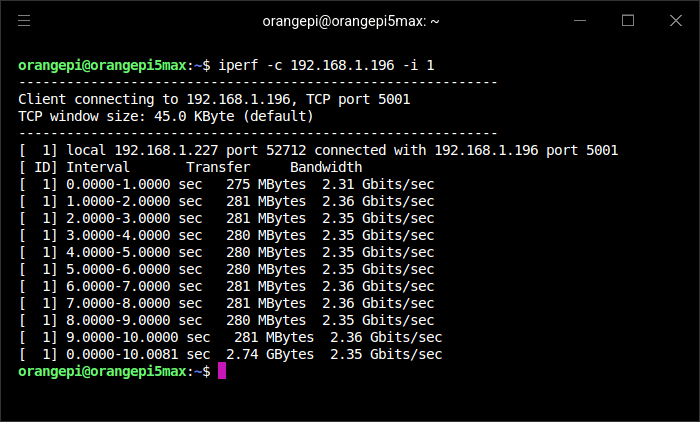
There is always overhead with TCP packets, so you never achieve 2.5Gbits/sec with any network switch. The 2.35Gbits/sec bandwidth is exactly what we should see. There’s no packet loss either.
I copied hundreds of gigs across multiple devices and the switch copes perfectly. There’s no throttling evident even with high-bandwidth network loads. I get the full bandwidth across my network.
Here’s output from Mission Center, an open source multi-featured system monitor. As you can see I’m getting 2.46 Gbps sending files from a mini PC to a NAS device.
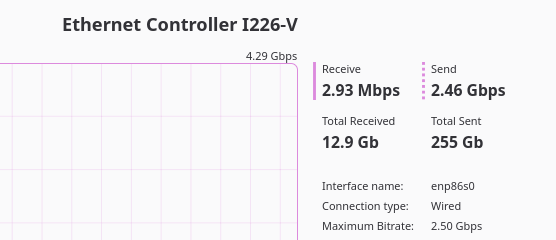
Summary
The BrosTrend switch gets my strong recommendation. It does exactly what it says on the box.
The switch offers excellent transfer speeds without needing to buy new ethernet cables. It’s totally silent in operation, offers an attractive design, the switch stays cool in use, and it’s very inexpensive to run courtesy of a MaxLinear network chip which gives very low power consumption. My power meter reports that it consumes around 3.7W when transferring large amounts of data.
The BrosTrend 5 Port 2.5GB Switch retails for £38 and is available from BrosTrend’s website. This is not an affiliate link.
£38 is great value for a 5 port switch. At this price point, it’s not surprising there’s no link aggregation available. The case is made of plastic, but build quality is reasonable.
If you need more than 5 ports and want link aggregation (to give 5 Gbps) BrosTrend sell more expensive switches. But for many home users, this 5 port switch will be more than sufficient.
